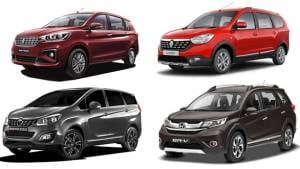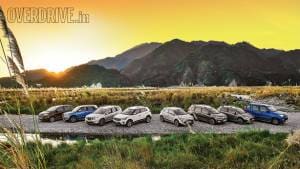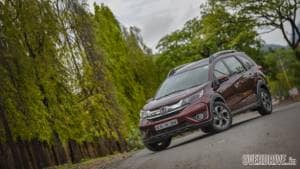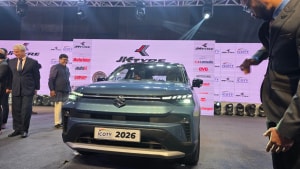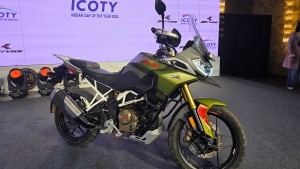2016 Honda BR-V first drive review (India)
Honda is one of the last few manufacturers to take a stab at the premium compact SUV segment but that's finally about to change with the new Honda B-RV. We had an all too brief experience with an Indonesian spec BR-V at Japan but now we've finally spent some quality time with this new premium compact 'SUV' in Indian conditions. Read on to see if the new Honda B-RV has what it takes to take on rivals like the Hyundai Creta, Renault Duster and Maruti Suzuki S-Cross.
Design and style
The Honda BR-V isn't your classic, butch SUV but it has an imposing stance nonetheless. Undoubtedly, the best angle on this machine is the CR-V inspired face with handsome wraparound headlamps that house a projector low beam and LED daytime lamps. The sculpted front bumper adds a dash of aggression without looking overdone and the silver treatment for the faux skidplate looks premium. Front on, the Honda BR-V looks both capable and expensive and will definitely turn heads.
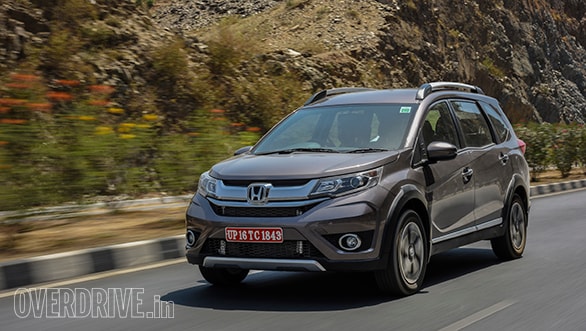
The view from the side however reminds of the BR-V's sibling the Honda Mobilio. From here, it looks more MPV-like with a long windowline that has a pinched end, another CR-V theme. There are some points of interest like the kink in the windowline, creases in the bodywork and funky looking 16-inch wheels that reside within rugged looking, black plastic clad wheel arches.
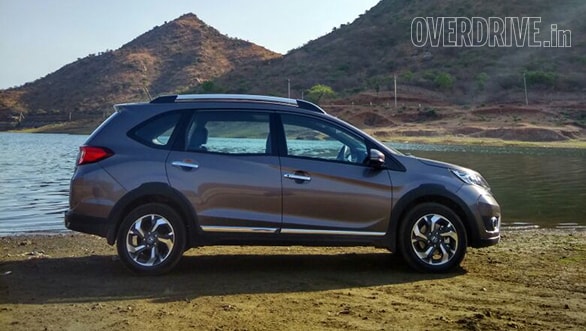
The MPV impression is reinforced by the long rear overhang which allows the accommodation of the third row of seats. If the Honda BR-V had a shorter, more abrupt rear overhang, it would have probably looked at lot more 'SUV'. Still, the high ground clearance and roof rails attempt to inject some of that back into the design. A smartly executed rear end uses a couple of wraparound LED lamps that are connected by a reflective strip. The rear windscreen is large and offers good visibility.
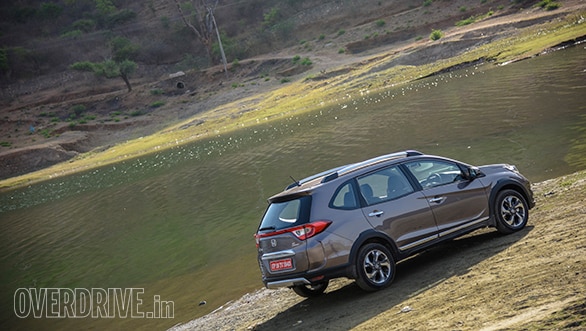
Interior and space
When we first saw the Honda BR-V in Japan, we were relieved that Honda was dumping the low rent interior from the Brio family for a more premium design. Since then, Honda has upgraded the Amaze in India offering the very same new dashboard and it is only a a matter of time before both the Mobilio and Brio get a similar update.
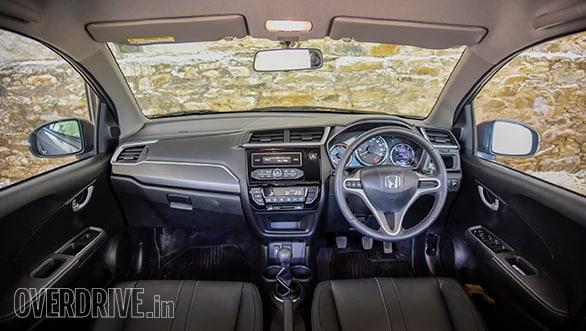
The layout follows a similar design to the Honda City and Jazz but unlike their touch controls for the sensitive automatic aircon, the Honda BR-V uses conventional buttons. Quality is good and the plastics feel durable. More importantly, the dash is no longer a deal breaker. The Honda BR-V also gets a new instrument cluster that uses white ringed dials with a separate multi-information display that has dual trips, average and instant efficiency, driving range and ambient temperature.
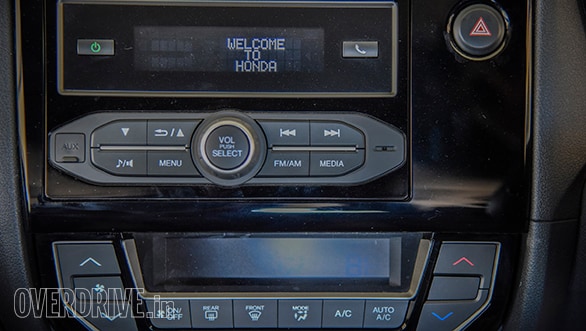
The audio system is a simple unit with a small black and white screen. It has USB, AUX and Bluetooth playback but sound quality is only average.
Where the Honda Amaze offers a standard key, the BR-V has a push button start system. The cabin is thoughtfully laid out, there are enough storage spaces, large bottle holders in the door pockets and an Innova-like roof mounted second AC for the rear passengers. Having roof mounted vents is logical as it sends some of the cool air to the third row. Low mounted ac vents like the ones in the Duster and Creta won't send air so far back. That having been said, the rear aircon, while effective, is quite loud.
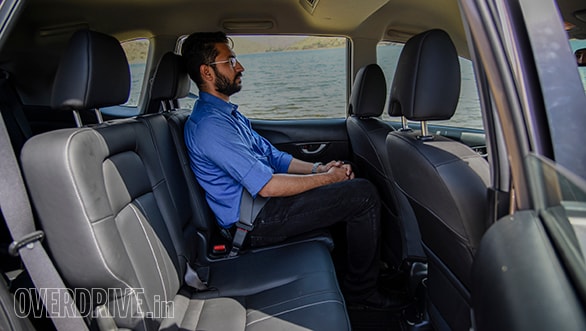
The seats on the top spec model are leather wrapped and supportive. Being the longest car in its segment has its advantages and space is generous, even the third row is quite usable. Middle row knee room isn't on the same level as a Honda City and you can tell Honda has sacrificed a little here to make the third row more practical. I'm 6"1 and I could fit in there with reasonable comfort. Being a conventional third row, passengers also get seatbelts unlike those silly jump seats in the sub-4m 7-seaters from Mahindra.
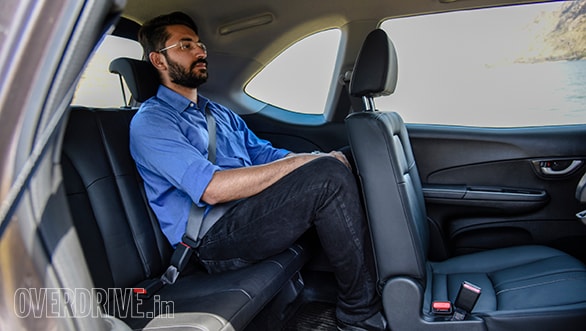
The seating set up is very flexible. There's a 60:40 split for the middle row which also reclines, slides and can be tumbled away. The third row splits 50:50 and can also be reclined and tumbled. Boot space with all the rows up is 223 litres and increases to a huge 691 litres with the last row dropped.
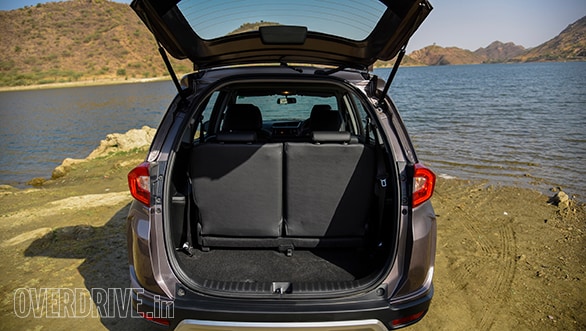
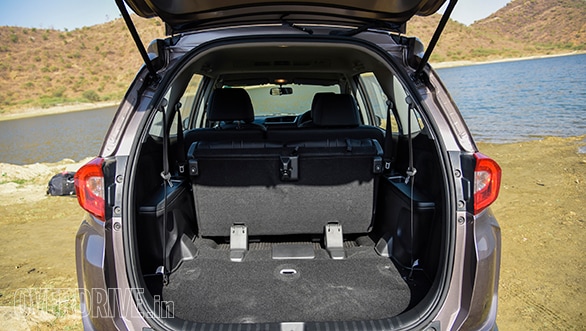
Engines and performance
The Honda BR-V offers the same engines from the City - a 1.5-litre petrol and turbo diesel. The petrol produces 119PS and 145Nm while the diesel makes 100PS and 200Nm. Those are familiar numbers but the BR-V boasts changes in the gearbox department as well as tweaks made to increase combustion efficiency and reduce weight. New for the petrol is a 6-speed manual that we haven't yet driven. The diesel Honda BR-V gets a 6-speed manual from the Honda City but with a slightly lower final drive ratio. First gear is now 12 per cent lower while 6th is 7 per cent higher. There is no automatic option on the diesel but the petrol offers a CVT which has paddle shifters - a segment first. Like the City CVT, Honda claims a slightly higher efficiency on the automatic BR-V -- 16kmpl vs the manual's 15.4kmpl. The diesel claims 21.9kmpl.
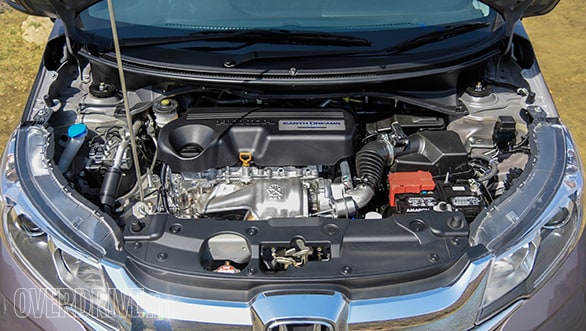
We've been driving the diesel Honda BR-V and found that it feels familiar yet different. The noise is the same - loud and gravelly. Despite Honda's efforts at improving NVH, this is still among the noisiest engines in its segment. What's changed, however, is that the engine feels a lot more linear. Where the Honda Amaze tends to lag upto 2,000rpm and burst into life before hitting the low 4,000rpm redline, the engine of the BR-V feels a lot more tractable. Power comes in at 1,500rpm and second gear can be used from low revs.
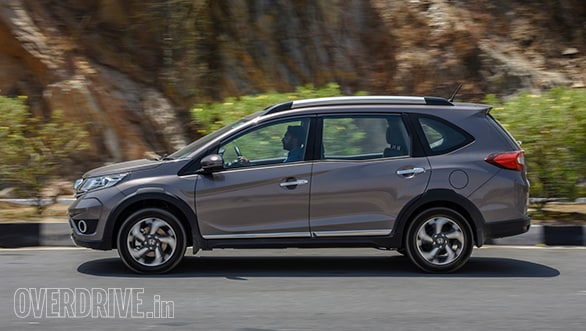
However, if memory serves me right, the engine isn't as rev happy as before and it fizzles out above 3,500rpm. While it's a little less dramatic, the motor has a new found tractable and usable nature. The 6-speed gearbox offers a similar short throw, clicky feel as the 5-speeder in the Amaze. Clutch action is decently light but a little springy, just a matter of getting accustomed to it.
We also had a short spin in the CVT Petrol. The gearbox is smooth and fairly quick to respond but drives best at half throttle - flooring the gas just raises the revs to annoying levels. Throttle response is sharp and the paddle shifters raise and drop revs to pre-programmed shift points, providing helpful engine braking when required. The gearbox is easy and effective for stress free driving but not for an enthusiast.
Ride and handling
Honda's surveys indicated that 65 per cent of buyers valued a comfortable ride quality and that's exactly the way the Honda BR-V has been set up. The car doesn't feel overtly soft or squishy but absorbs bumps and irregularities well.
The suspension feel is similar to a Honda City, placing ride comfort over sporty handling. The electrically assisted power steering is well weighted and not as light as the Hyundai Creta. The driving position, while comfortable, isn't very high up and commanding. From behind the wheel, it feels more urban crossover than a full on SUV.
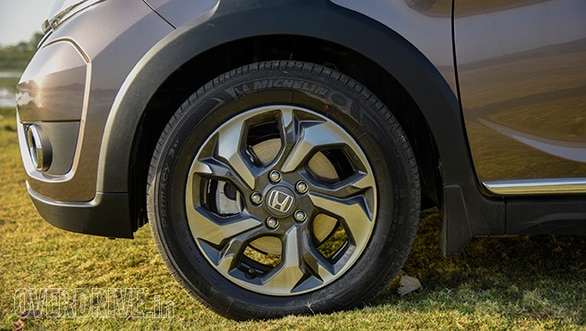
Grip levels from the Michelin Primacy tyres are good and the Honda BR-V feels perfectly adept on a winding road but not really involving or exciting. 210mm of ground clearance is the highest in the class and allows stress free driving on the worst of broken roads.
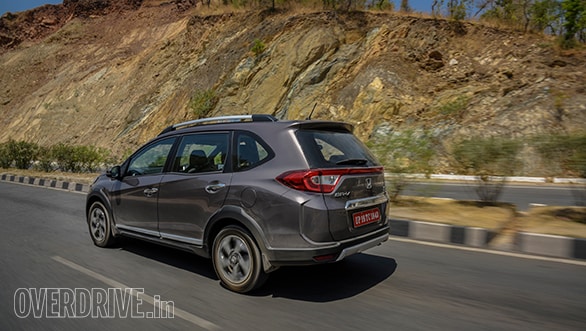
Highway stability is good and the Honda BR-V is happy at a steady 120kmph without feeling light or flighty. Harsh NVH has been a Honda weak point for a while on this platform and the company has worked hard to fix that. While the engine is still quite vocal, road noise has been significantly reduced thanks to extra insulating materials used in the doors, hood, roof, floor and dashboard. The cabin in the CVT petrol was quite silent and well insulated. The BR-V feels far more isolated than its Brio-based siblings and is up in the realm of the Honda City.
Safety and features
The Honda BR-V offers dual airbags as standard across the range. ABS, however is only standard on diesel trims while the entry level petrol doesn't get it. ESP is not an option.
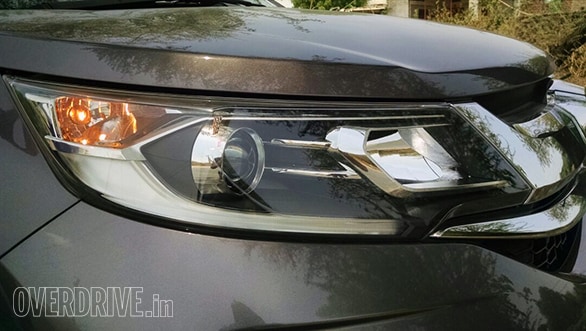
The BR-V has a decent offering of kit like electrically adjustable and folding rear view mirrors, a proper rear aircon, a third row, LED DRLs and projector headlamps. However there are also many absent features for this segment like reverse parking sensors/camera, cruise control, auto headlamps, auto wipers, auto-dimming rear view mirror or a touch screen audio system.
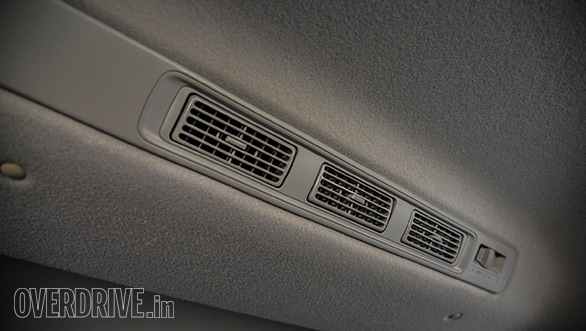
Conclusion
The Honda BR-V has a couple of very good things going for it. It's the biggest in its segment, has the most spacious cabin and can seat seven. It's also quite a good looking machine and will definitely stand out from the crowd. The diesel engine, while noisy, is capable and should be quite efficient.
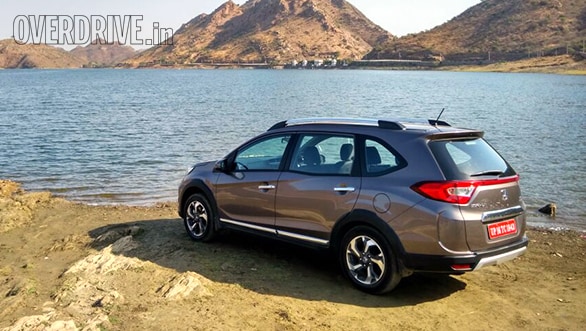
At the same time it loses out on features and doesn't have the most powerful or refined engine in the segment. Pricing therefore is vital to the Honda BR-V's success. Honda tells us they plan on pricing the BR-V competitively and we hope the price is closer towards the Renault Duster than the Hyundai Creta. We'll only find out on May 5 when the Honda BR-V will be launched.
Starts Rs 6.32 Lakhs
1498cc
Manual
90
200
21 Kmpl
-NA-
-NA-
Automatic
-NA-
145
-NA-
Starts Rs 10.9 Lakhs
1497cc
Manual
100
145
17.8 Kmpl
Starts Rs 9.99 Lakhs
1353cc
Automatic
115
242
-NA-
Starts Rs 8.39 Lakhs
1462cc
Automatic
105
138
18.55 Kmpl
Starts Rs 8.49 Lakhs
1330cc
CVT
156
154
-NA-
